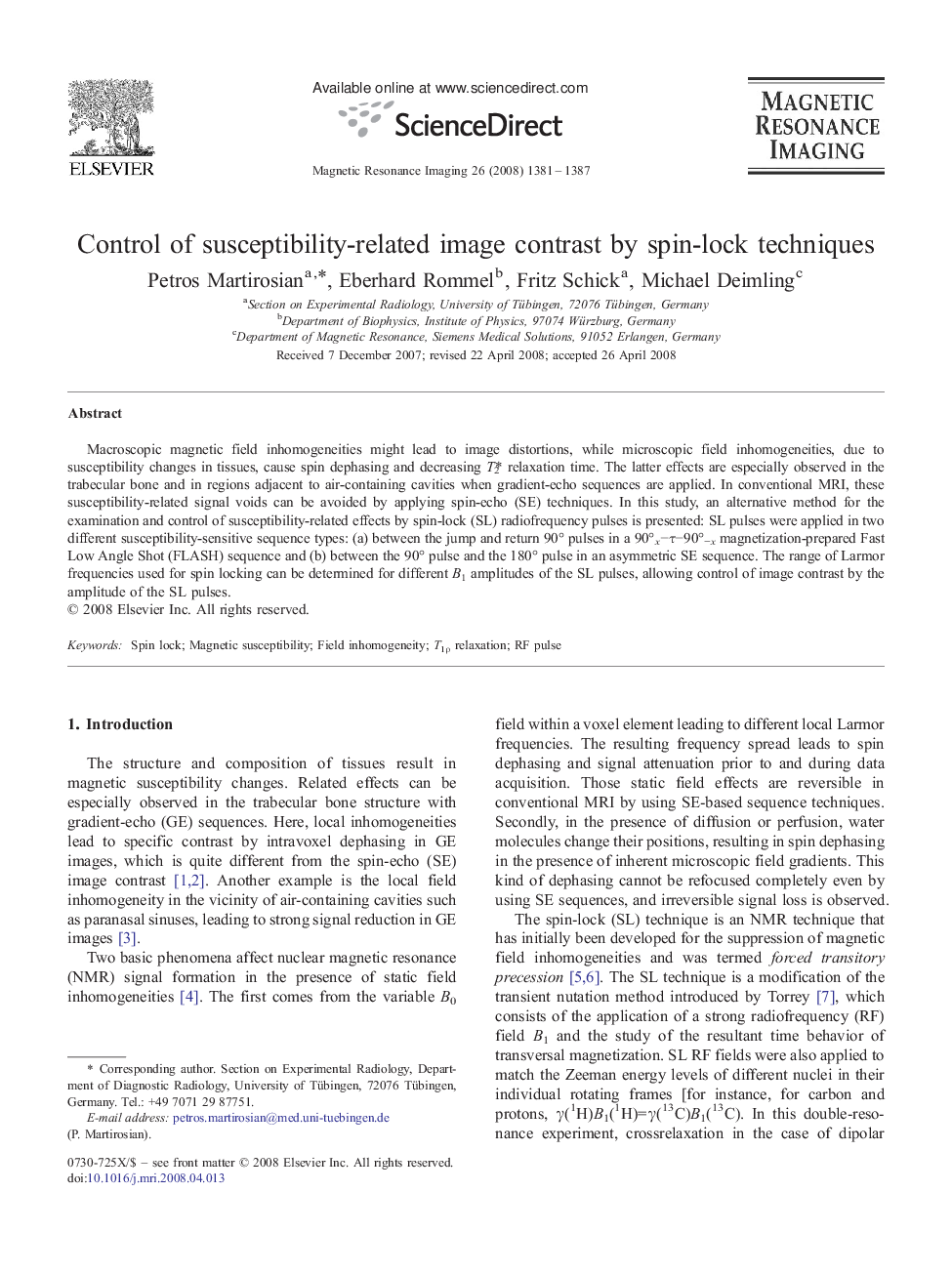| Article ID | Journal | Published Year | Pages | File Type |
|---|---|---|---|---|
| 1807298 | Magnetic Resonance Imaging | 2008 | 7 Pages |
Abstract
Macroscopic magnetic field inhomogeneities might lead to image distortions, while microscopic field inhomogeneities, due to susceptibility changes in tissues, cause spin dephasing and decreasing T2â relaxation time. The latter effects are especially observed in the trabecular bone and in regions adjacent to air-containing cavities when gradient-echo sequences are applied. In conventional MRI, these susceptibility-related signal voids can be avoided by applying spin-echo (SE) techniques. In this study, an alternative method for the examination and control of susceptibility-related effects by spin-lock (SL) radiofrequency pulses is presented: SL pulses were applied in two different susceptibility-sensitive sequence types: (a) between the jump and return 90° pulses in a 90°xâÏâ90°âx magnetization-prepared Fast Low Angle Shot (FLASH) sequence and (b) between the 90° pulse and the 180° pulse in an asymmetric SE sequence. The range of Larmor frequencies used for spin locking can be determined for different B1 amplitudes of the SL pulses, allowing control of image contrast by the amplitude of the SL pulses.
Related Topics
Physical Sciences and Engineering
Physics and Astronomy
Condensed Matter Physics
Authors
Petros Martirosian, Eberhard Rommel, Fritz Schick, Michael Deimling,
